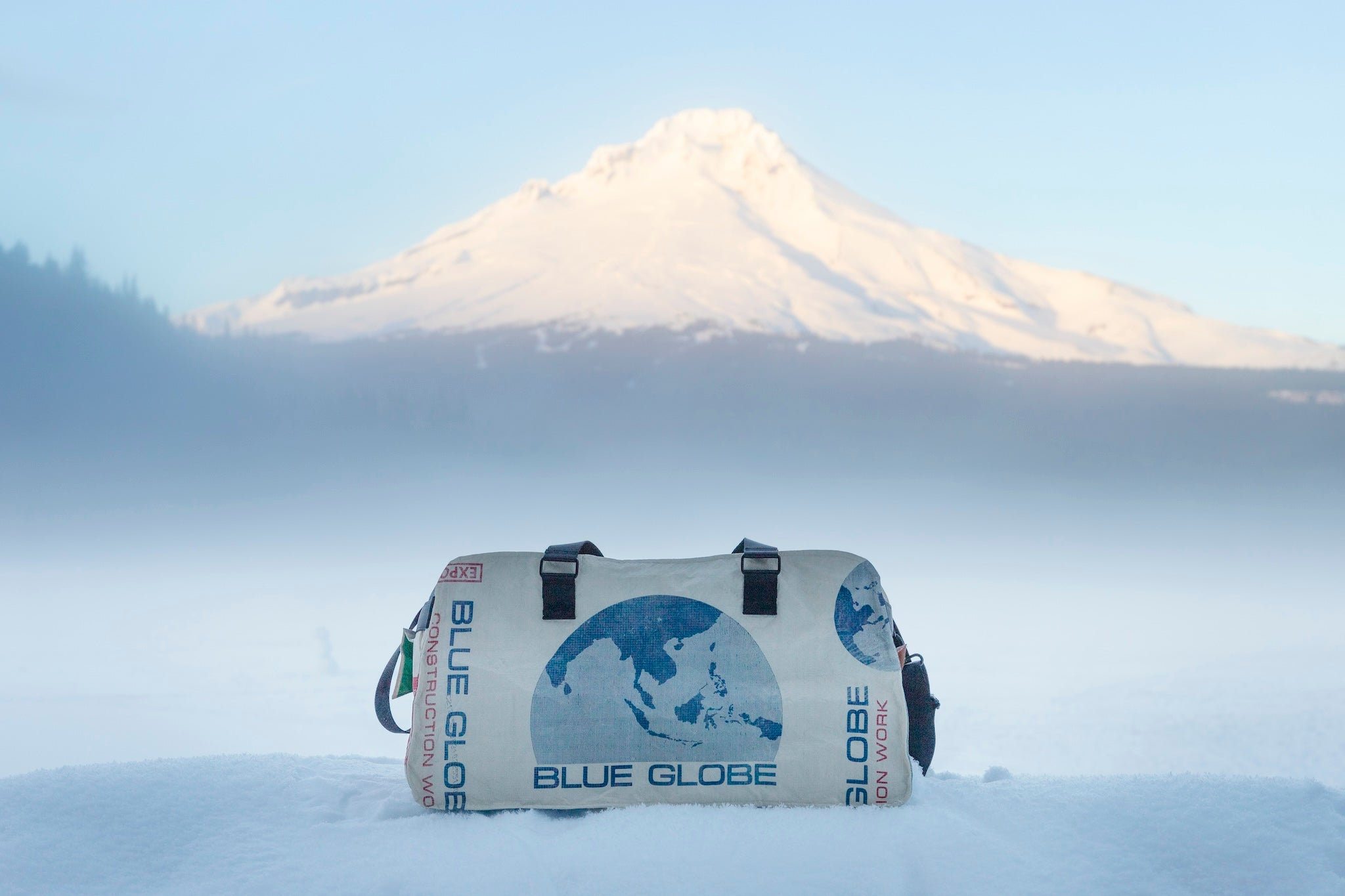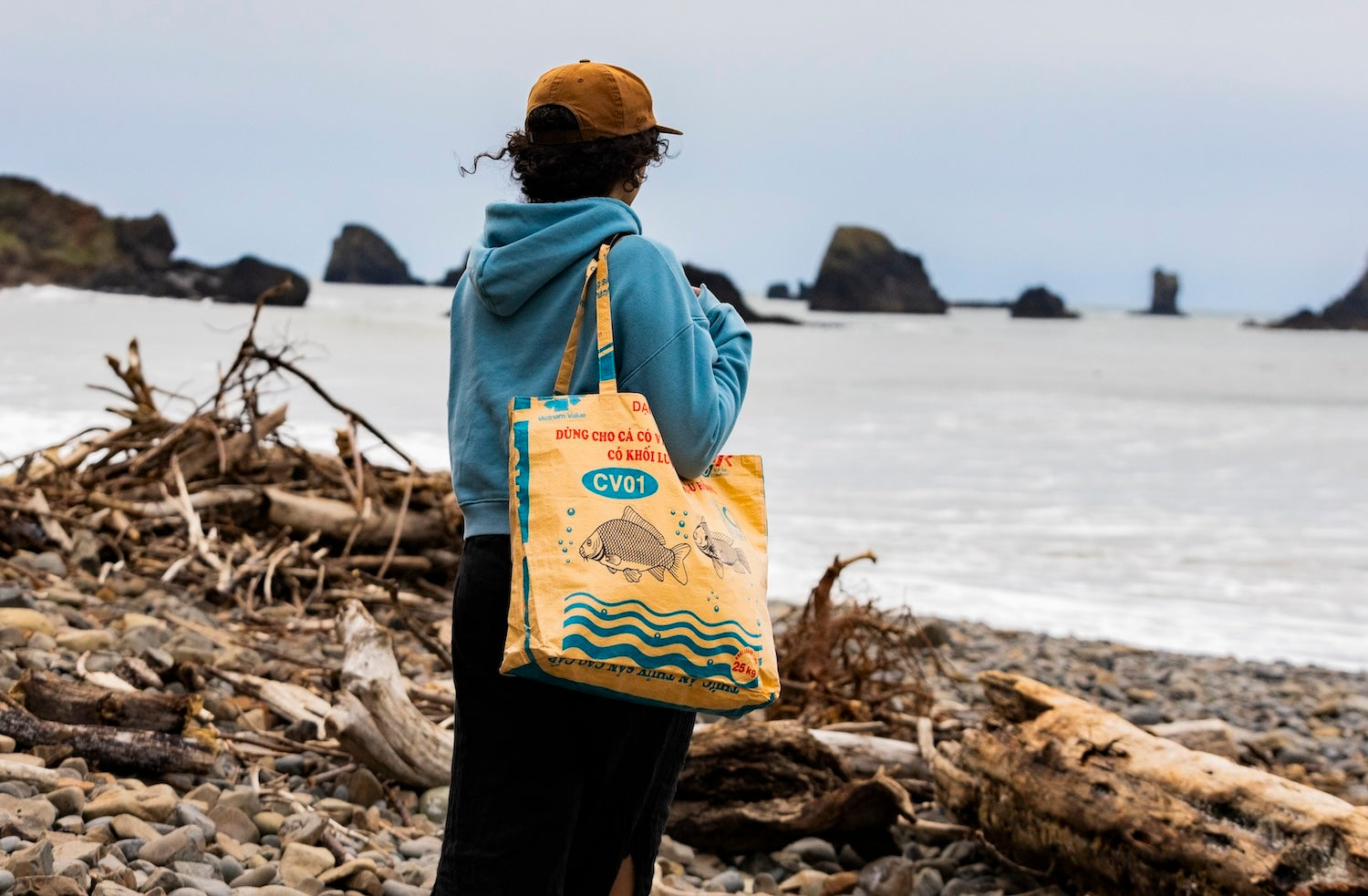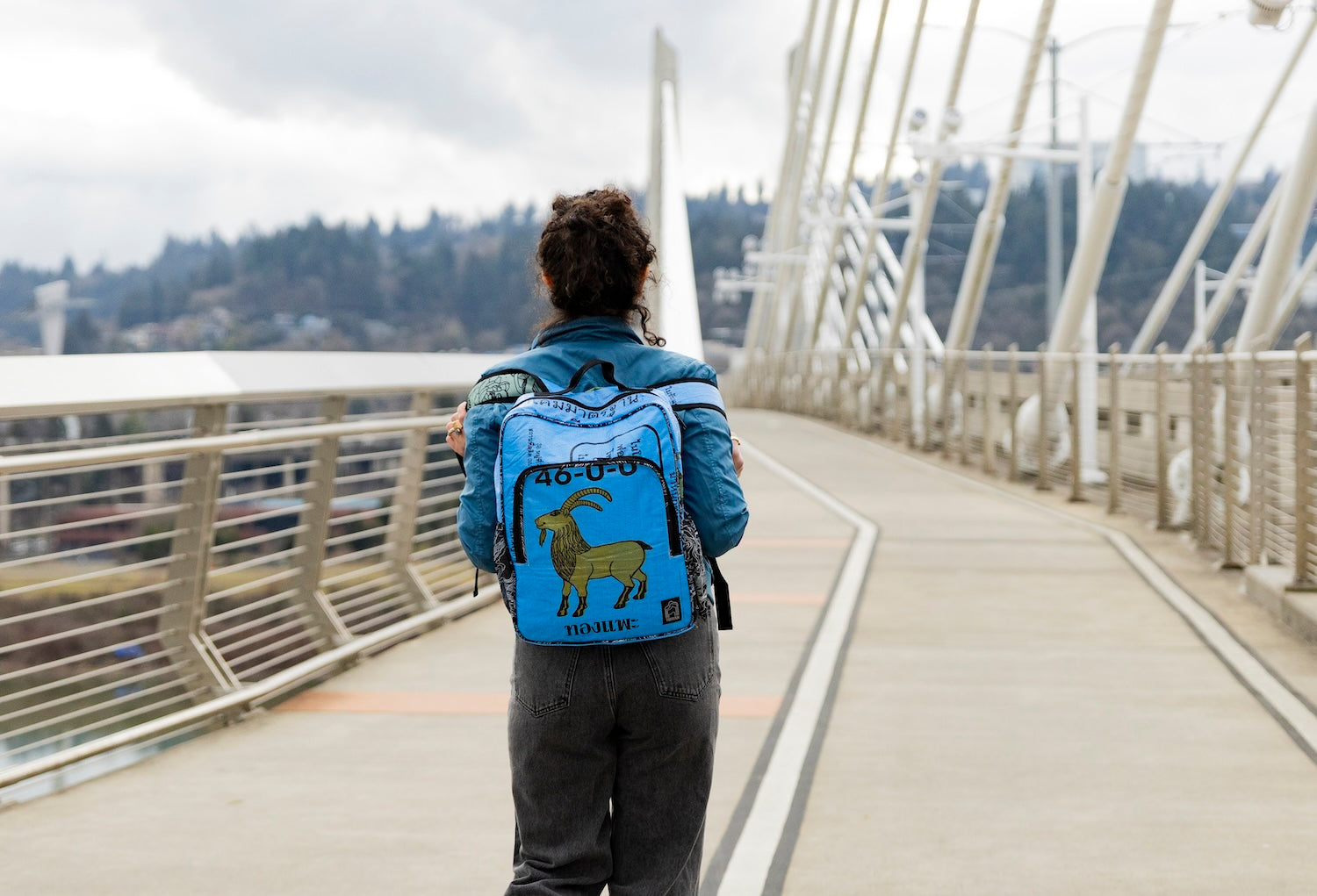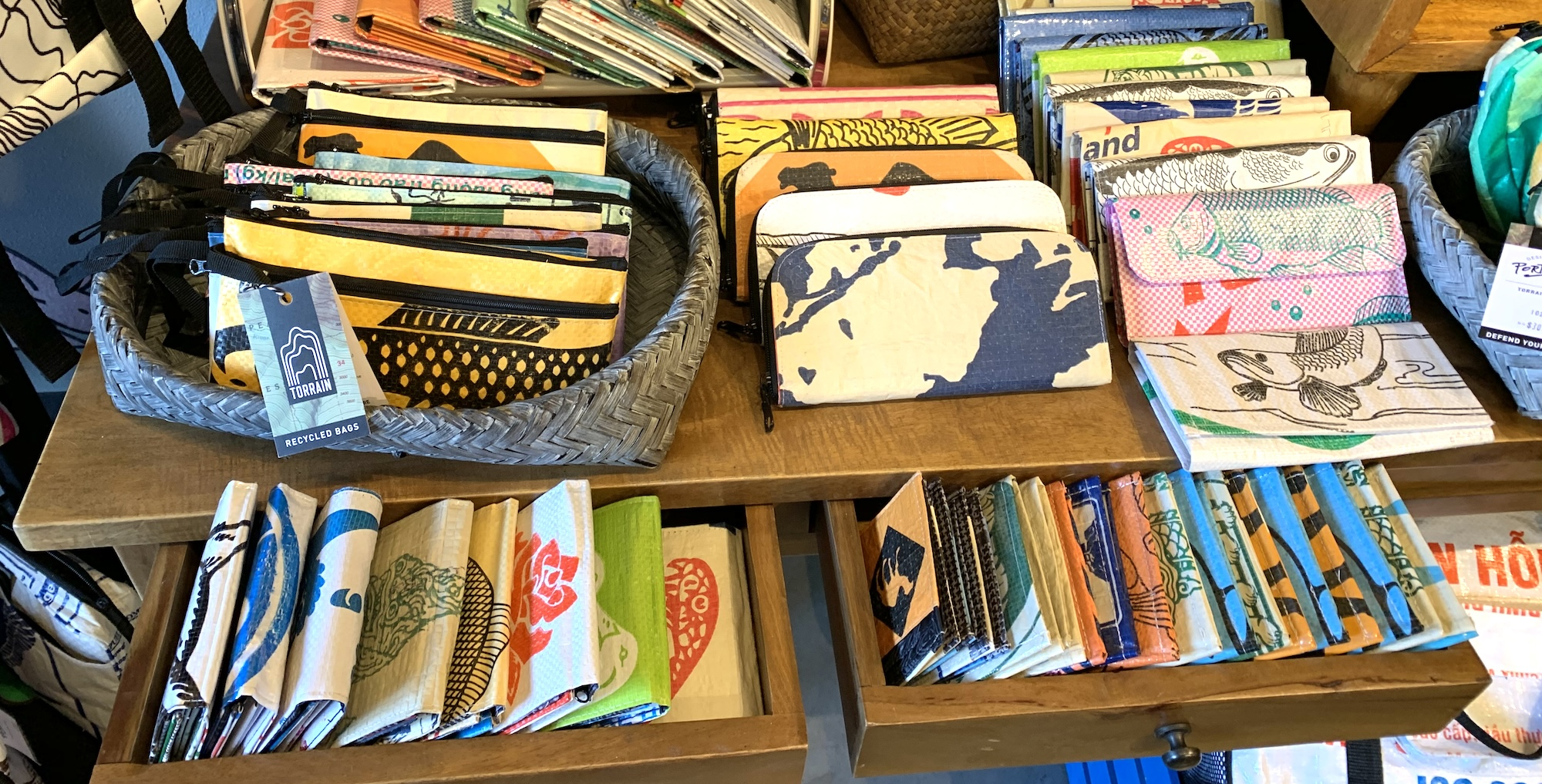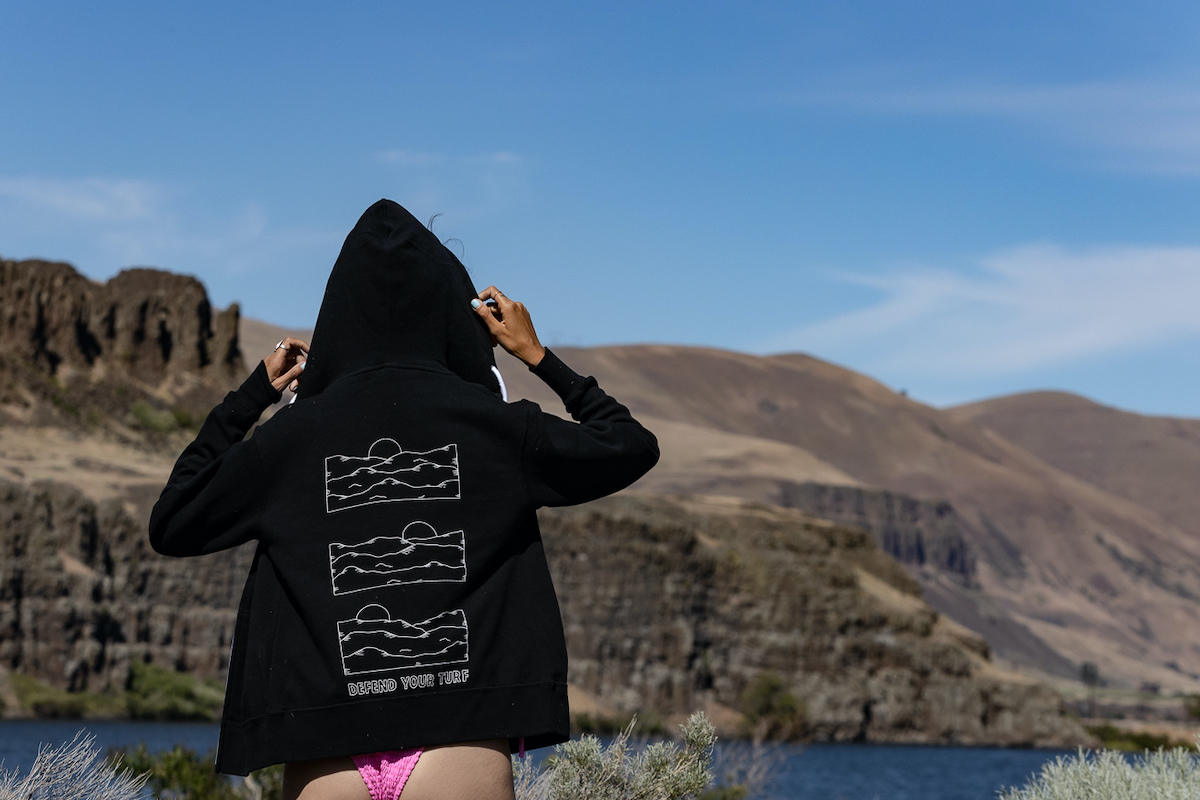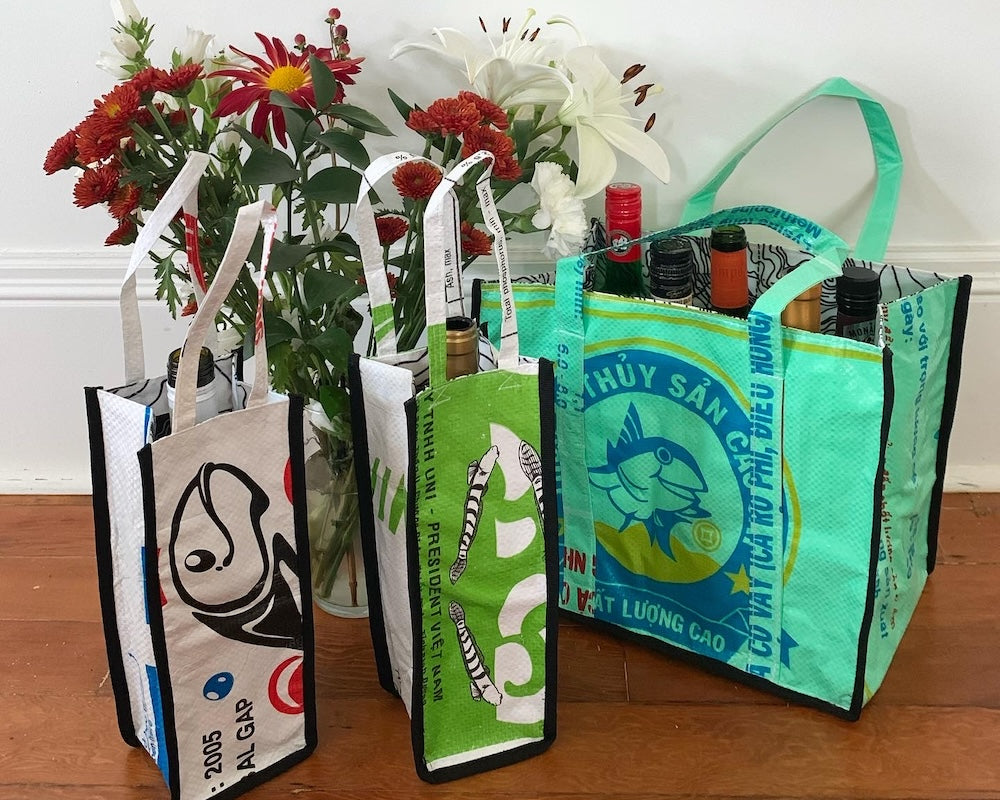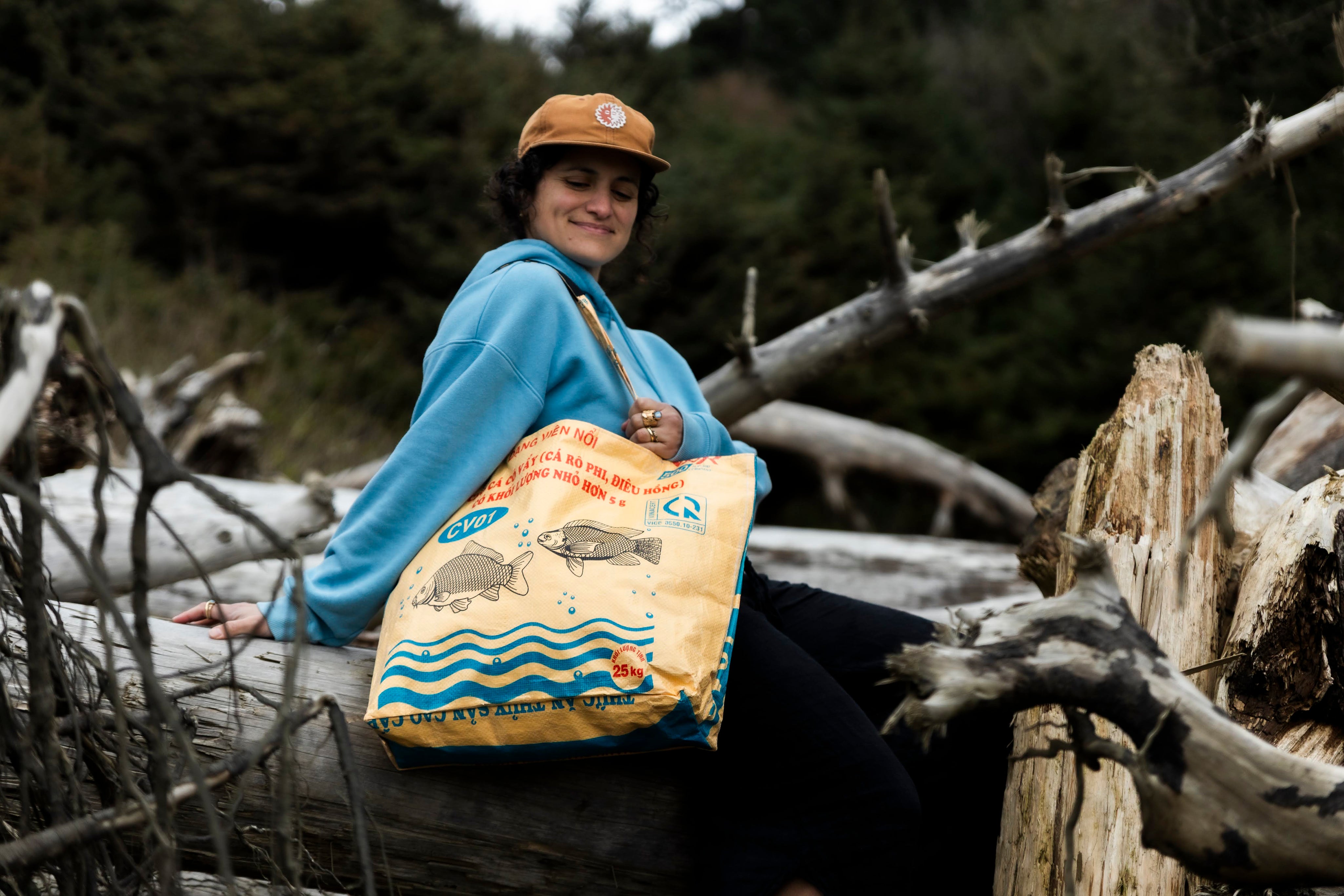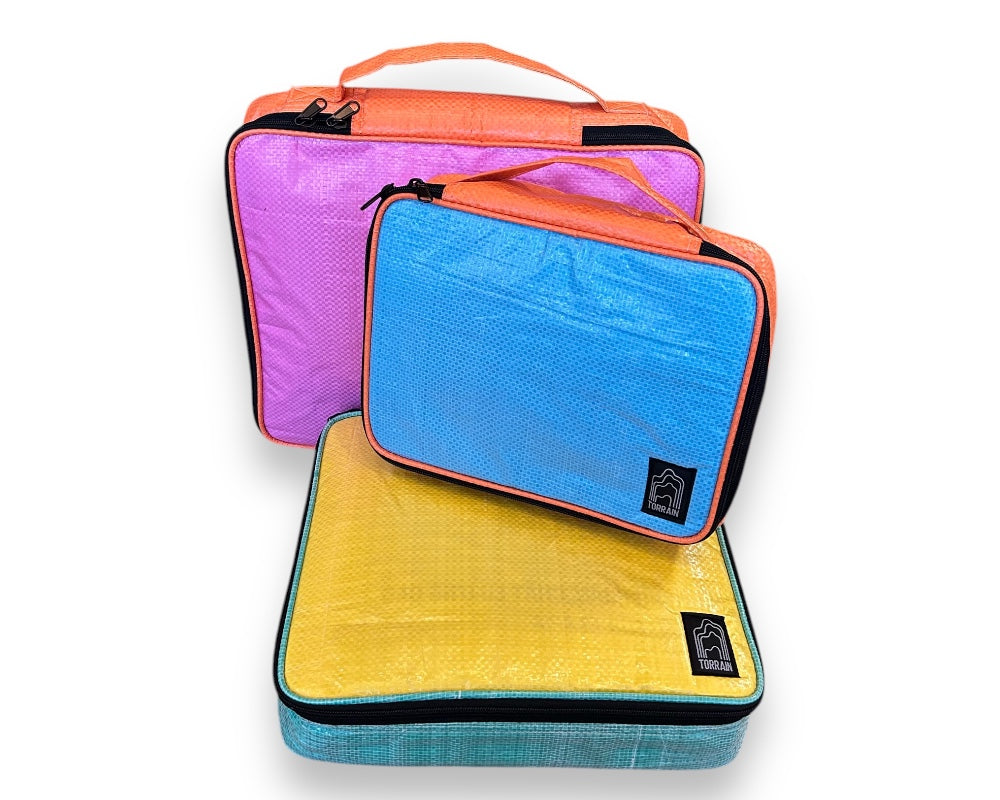In today’s world, fashion is no longer just about trends, colors, or who wore what. Increasingly, it’s about ethics, environment, and purpose. Among the many ways fashion is evolving, one standout movement is the rise of recycled bags; using upcycled materials, repurposed waste, and sustainable production methods to create accessories that look good and do good. Here’s why recycled bags are not just a fad... they’re the future of fashion.
1. The Environmental Imperative
The fashion industry is among the top polluters globally, from the use of water, chemicals, to waste, carbon emissions, and microplastics. In this context, recycled bags offer a powerful solution:
-
Reducing waste / landfill burden: Many recycled bags use materials that otherwise would end up as waste — old plastic bottles, feed sacks, cement sacks, discarded fabrics. By converting “waste” into wearable goods, we cut the volume going into landfills.
-
Lowering resource consumption: When we recycle instead of producing virgin materials, we use less water, fewer chemicals, and less energy. The extraction of raw materials (e.g. new plastics or fabrics) is resource-intensive; recycling helps break that dependency.
- Closing the loop / circular economy: Recycled bags are part of a circular fashion model, in which materials are reused, reprocessed, and given multiple lives, rather than the “take-make-dispose” linear model.
Because of these environmental benefits, more consumers and brands are shifting preferences toward sustainable alternatives, and recycled bags fit perfectly in that shift.
2. Function, Durability & Innovation
Sometimes people assume “green” means “fragile” or “less functional.” But recycled bags are proving otherwise. In many cases, they outperform traditional bags. Here’s how:
-
Strength of unconventional materials: Many recycled bags are made from materials originally designed for durability. For example, feed sacks, cement bags, heavy-duty packaging, woven plastics. These have to endure harsh conditions (weather, weight, rough handling), so they’re engineered to last.
-
Water resistance & weather tolerance: Some recycled materials are inherently water-resistant or waterproof (e.g. woven plastics or treated sacks). This makes them ideal for bags that travel, go outdoors, or see rough usage.
-
Unique textures, colors, and patterns: Because recycled materials come from diverse sources, each piece is unique. Patterns from old packaging, stamps, textures, prints... this gives recycled bags a one-of-a-kind character that mass-produced new fabrics can’t replicate.
- Continuous innovation: Designers are experimenting with new recycling techniques; breaking down mixed-material waste, combining materials, using recycled lining fabrics, exploring biodegradable finishes, etc. The innovation pipeline is growing.
So, recycled bags are not just eco. They’re functional, durable, and often more interesting than conventional bags.
3. Ethical & Social Impact
Sustainability is not only about the planet; it’s also about people. Many recycled bag brands incorporate ethical practices:
-
Fair wages & artisan communities: Brands like ours partner with local artisans (e.g. in Cambodia) to produce bags from upcycled materials in fair working conditions.
-
Empowering marginalized groups: The use of upcycling can give work to communities that may have limited economic opportunities.
-
Transparency and storytelling: Recycled bag brands often share the full journey — where the materials came from, who made them, how they were processed. That storytelling builds deeper connection with customers.
- Donations / social cause alignment: Some brands commit a portion of profits or sales for environmental or social causes. For example, we donate $1 from each sale to rotating organizations that support planet and people.
Hence, recycled bags combine environmental and social good — making them powerful tools for conscious consumers who want their purchases to reflect values.
4. Consumer Trends & Market Demand
Why is this movement catching fire? Because the market is shifting:
-
Eco-conscious millennials & Gen Z: Younger generations increasingly prefer products that align with sustainability values. They are more likely to choose brands that are transparent about materials and impact.
-
Fashion as identity & statement: Carrying a recycled bag is a statement; it signals that you care, you’re thoughtful, you reject “fast fashion waste.” It becomes part of the wearable identity.
-
Media & recognition: When sustainable brands get featured in mainstream fashion media, it helps shift perceptions. For instance, TORRAIN was featured in British Vogue in 2025 — signaling that sustainable, recycled bags are gaining acceptance in high fashion circles.
- Policy & regulation pressure: Governments and global institutions are increasingly pushing for circular economy policies, bans on certain plastics, incentives for recycled content, etc. The fashion industry may be compelled to adapt.
All these push forces converge to make recycled bags not a niche, but a mainstream component of tomorrow’s fashion ecosystem.
5. Challenges & How They’re Being Tackled
Of course, no movement is without challenges. But recycled bags are evolving fast:
-
Material sourcing & consistency: Recycled materials are often irregular in quantity or quality. Solution: building supply chains, collecting waste materials systematically, investing in recycling infrastructure.
-
Processing costs: Recycling, cleaning, transforming waste into usable bag fabrics can be costlier than mass-producing new material. But as scale increases, processes mature, and carbon pricing or environmental regulations tighten, recycled options become more competitive.
-
Consumer perception & price premium: Some consumers see sustainable goods as expensive. Brands must justify the price — through transparency, storytelling, durability, and style.
-
Design constraints: Recycled materials may impose design limitations (e.g. limited colors, flexibility). But creative designers are pushing boundaries — blending recycled with new, mixing textures, customizing shapes.
- Recycling at end-of-life: Even recycled bags eventually wear out. The future lies in designing them to be recyclable again (i.e. truly circular). Brands are beginning to think about take-back programs or compostable elements.
Despite these challenges, progress is already visible. Innovations in material science, better recycling techniques, consumer willingness to pay for purpose — all help overcome hurdles.
6. How to Choose a Good Recycled Bag
For someone looking to adopt this trend, here's a checklist:
-
Know the material origin: Is it recycled plastic bottles, feed sacks, fabric scraps? A brand that discloses this is more trustworthy.
-
Check stitching, zippers, construction: Just like any quality bag, it should hold up under regular use.
-
Ask about social impact: Does the brand employ artisans ethically? Do they pay fair wages?
-
Review repair / warranty options: Good brands often provide repair services or guarantee longevity.
- Style and uniqueness: Since recycled materials vary, find a design you like — the “imperfections” are part of the story.
If you're looking at TORRAIN, for example, you’ll see that we use upcycled cement & feed sacks, recycled plastic for linings, and that we commit $1 per sale to support planet/people causes.
A Bag That Carries a Story
Recycled bags are more than just a trend. They merge environmental sense, functional design, social impact, and consumer identity. When you carry a recycled bag, you carry a story of waste diverted, artisans empowered, and a future where fashion doesn’t cost the planet.
Better Bag. Better Planet.


